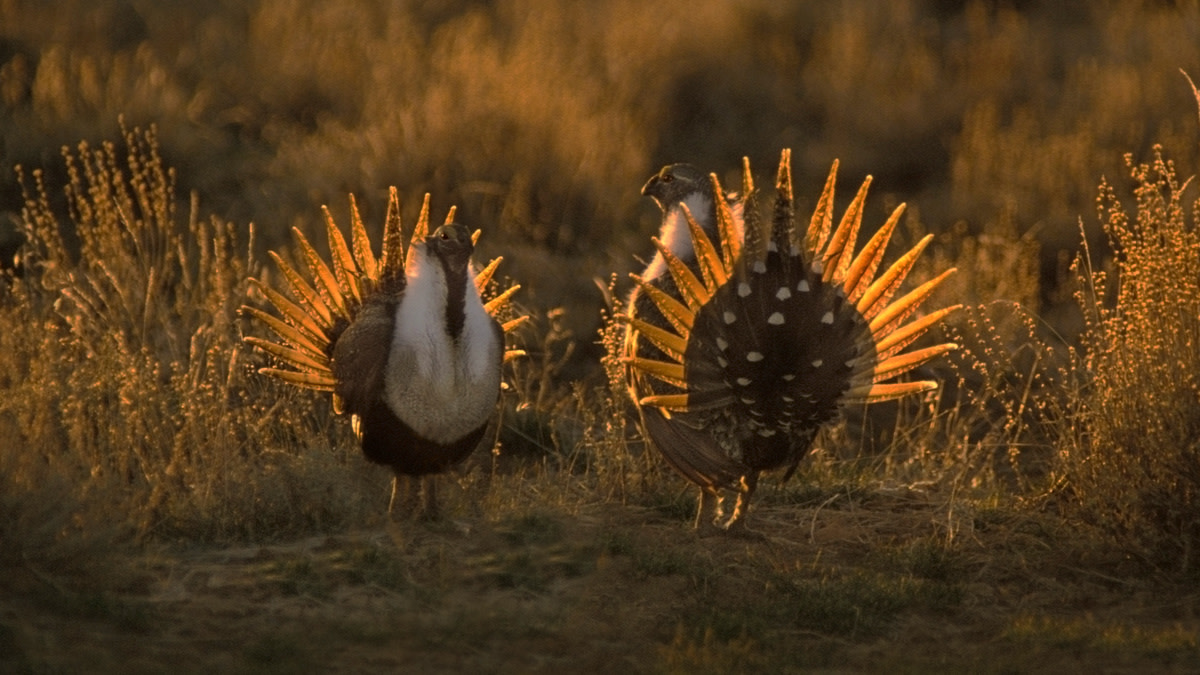
In 2017, the Wyoming Legislature passed a bill that allowed licensed, private game farms to collect wild sage grouse eggs, hatch them in captivity, and use them to artificially propagate the imperiled species. Many conservationists pushed back on the bill then and are fighting it again now.
The bill reflected the state’s overwhelming desire to keep the sage grouse off the endangered species list. This desire is shared by a broad group of stakeholders who don’t want to face the complications a listing decision would create if the enigmatic birds and their rapidly disappearing habitat reached a point of no return. The idea is that these farms could replace birds lost to development and other factors.
Because the bill and the practices it permitted were so new, a five-year sunset period was written into the language. This gave private farms interested in partaking in this experiment a half-decade to meet state requirements for licensing and success in collecting, hatching, raising, and breeding sage grouse. Once the sunset period ended, a new bill would then arise to either immortalize private sage grouse game farms or kill the whole idea, based on the success of the trial period.
Five years have since passed, and the writing is on the wall: Only one farm in the entire state successfully met the standards for licensing. According to The Powell Tribune and testimony from the Senate committee hearing, the Diamond Wings Upland Game Bird Farm outside of Powell collected 133 eggs, hatched 110, and has kept 51 of those birds alive thus far. They didn’t provide any proof, however, that those birds would successfully breed and hatch healthy eggs in captivity. The farm also hasn’t demonstrated that any captive-bred, pen-raised birds would eventually survive a reintroduction to the wild, or that reintroduced birds wouldn’t pose disease risk to wild populations. In short, whether private sage grouse game farms can successfully and sustainably boost the state’s population is entirely unknown, and the potential for them to cause damage to that population is all too real.
Despite this bleak outlook, most of the Wyoming Senate is hedging their bets anyway. A bill to remove the Dec. 2022 sunset date and let these practices continue in perpetuity flew through Senate committee last week and cleared the floor with a vote of 26-4. As it goes before House committee tomorrow, March 1, Wyoming’s wildlife science and conservation community is fighting to sway politicians away from the oil and gas-backed legislation and listen to the science instead.
“For three administrations in Wyoming, many stakeholders came together and decided to keep the sage grouse on the landscape and off the endangered species list by working on habitat. Habitat is the problem. They have a problem with fragmentation and habitat health,” Jess Johnson, Wyoming Wildlife Federation government affairs director, told MeatEater. “So, just propagating and making more birds to put on a landscape that doesn't have the habitat to support them does not make sense. This is not a sustainable conservation method. None of the conservation groups or the scientists involved think this is a good idea.”
Research about the viability of domestic breeding to support other wild bird populations have not painted a rosy picture. This study suggests that only 4 to 8% of Idaho’s pen-reared ring-necked pheasants survived past six months after being released into the wild. Here’s an article about captive-bred sage grouse efforts in Alberta, where just two hens of the 66 planted birds survived their first year in the wild and only one produced a brood of chicks.
The Alberta captive breeding project is focused on saving Canada’s extremely endangered sage grouse population of around 340 birds while the province works quickly to improve habitat. Meanwhile, the population in the United States still numbers in the hundreds of thousands, but habitat has decreased by an estimated 80% since 1965. In short, while Canada desperately needs more sage grouse right now, the United States desperately needs more habitat to support the sage grouse they already have.
“We don’t solve our mule deer problems with deer farms. Why would we do it with sage grouse?” Johnson said. “In fact, I would argue that in introducing the idea of deer farms, because of chronic wasting disease and everything that has happened since, we have actually further endangered the mule deer.”
All the usual concerns about the privatization of public resources also apply to this issue, Johnson explained. Once the licensed farms have acquired wild eggs, of which they’re allowed to collect 250 a year—removing potentially viable birds from the landscape—the bill also enables the farms to sell the birds and turn a profit.
“This bill allows for the sale of wild, native species for profit in a state that has consistently rejected deer and elk game farming,” Johnson said. “Wyoming rejected it in 1970s and we have held that stance since. It opens the sage grouse population to disease, despite the criteria put in place to keep disease out. It is getting pushback across the scientific community. But it is being heralded as a tool in the toolbox for conservation. Except, if this worked, we would already be doing this as a state.”
The House vote on the bill could happen as early as Wednesday, March 2. If you would like to voice your opinion on Senate File 61, whether you’re a Wyoming resident or not, check out the Wyoming Wildlife Federation’s page on the issue and follow the instructions at the bottom.






Conversation